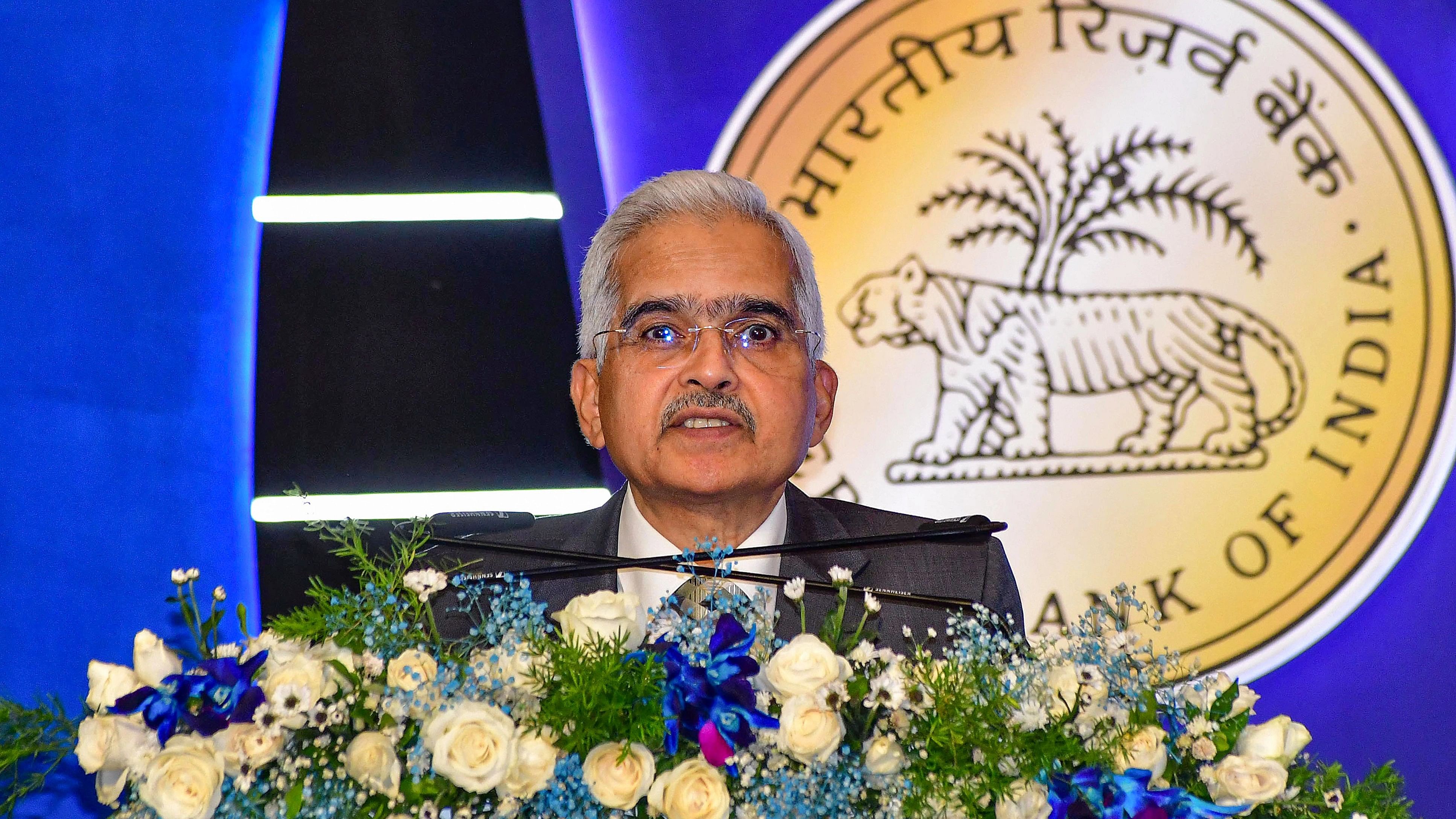
RBI Governor Shaktikanta Das.
Credit: PTI File Photo
The Reserve Bank of India’s Monetary Policy Committee on Friday unanimously decided to keep policy repo rate unchanged at 6.5 per cent for the fourth time in a row and maintain economic growth and inflation projection.
The status quo on policy repo rate means the interest rates on retail as well as corporate borrowings would remain stable. Repo rate is the interest rate at which the RBI lends money to commercial banks. Thus, the interest rates on home, car and other loans are largely governed by this rate.
The repo rate was hiked cumulatively by 250 basis points between May 2022 and February 2023. This led to a sharp increase in equated monthly instalments (EMIs) on home, car and other loans. The key policy rates have remained unchanged since February 2023.
While the central bank’s rate setting panel left GDP growth as well as inflation forecasts unchanged, the tone remained hawkish in view of the uncertainties on crude oil price and agricultural output.
“We have identified high inflation as a major risk to macroeconomic stability and sustainable growth. Accordingly, our monetary policy remains resolutely focused on aligning inflation to the 4 per cent target on a durable basis,” said RBI Governor Shaktikanta Das.
Consumer Price Index-based retail inflation, which the RBI monitors for its policy action, jumped to 7.44 per cent in July, the highest in 15 months. It stood at 6.83 per cent in August, sharply higher than the RBI’s upper tolerance limit of 6 per cent.
Das emphasised that the central bank’s target is to keep retail inflation at 4 per cent on a durable basis.
The MPC also decided by a majority of 5 out of 6 members to remain focused on withdrawal of accommodation to ensure that inflation progressively aligns to the target, while supporting growth.
According to the RBI, the near-term inflation outlook is expected to improve on the back of vegetable price correction and the recent reduction in LPG prices. “The future trajectory will be conditioned by a number of factors like lower area sown under pulses, dip in reservoir levels, El Niño conditions and volatile global energy and food prices,” the MPC noted in its resolution.
The central bank has left retail inflation target for the current financial year unchanged at 5.4% with Q2 at 6.4%, Q3 at 5.6%, and Q4 at 5.2%. For the first quarter of 2024-25 inflation is projected at 5.2%.
The RBI has also kept the GDP growth forecast unchanged. The real GDP growth for 2023-24 is projected at 6.5 per cent, with Q2 at 6.5 per cent, Q3 at 6 per cent, and Q4 at 5.7 per cent. For the first quarter of 2024-25 GDP growth is projected at 6.6 per cent. India’s gross domestic product (GDP) growth stood at 7.8 per cent in April-June quarter of the current financial year, as per the latest data released by the government.
The RBI’s action on policy rates is in line with analysts and market expectations. “A completely in line with expectations policy is neutral from the market perspective,” said V K Vijayakumar, Chief Investment Strategist at Geojit Financial Services.
“There is a sense of caution visible due to inflation rising tending to act as a major macro headwind,” said Lakshmi Iyer, CEO-Investment & Strategy, Kotak Alternate Asset Managers Limited.
Suvodeep Rakshit, Senior Economist, Kotak Institutional Equities, noted that the RBI has explicitly highlighted the need to use open market operations (OMO) sales to modulate liquidity.
The warning from Governor Das that the central bank will resort to open market operations to absorb excess liquidity if necessary pushed the 10-year bond yields up marginally.
“We believe that inflation risks remain on the upside given weather related impact as well as commodity prices. Global monetary conditions will also weigh on RBI’s policy decisions,” Rakshit said.
“Food inflation remains a key monitorable not only because it is in double digits, but also because sub-normal monsoon and muted sowing can impact kharif output and prices,” said Dharmakirti Joshi, Chief Economist, CRISIL.
He said the MPC will remain watchful of the inflation and remains resolute in its commitment to align inflation to the targeted level.
According to him, the growth projection has been retained at 6.5 per cent for the current financial year with risks evenly balanced.
The MPC meeting took place against the backdrop of Consumer Price-based Inflation (CPI) touching 6.83 per cent in August. The September print of inflation is expected next week.
The government has mandated the RBI to keep CPI inflation at 4 per cent with a margin of 2 per cent on either side.